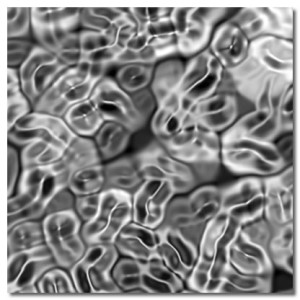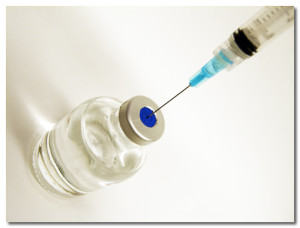The canine Parvovirus (referred to as Parvo for short) is a type 2 virus that every Chihuahua owner needs to be aware of. Once a Chihuahua is exposed to it, they may experience a wide range of symptoms include dehydration, diarrhea and vomiting. If treatment is not given within 24-48 hours, an infected Chihuahua may end up dying. As an owner, it’s your responsibility to protect your Chihuahua (or Chihuahuas) from this horrible virus.

You might be surprised to learn that the Parvovirus didn’t start appearing in dogs until 1978. Before this time, there were no cases of this deadly virus, and owners didn’t have to worry about protecting their dogs from it. However, scientists believe a mutation of the feline distemper virus (panleukopenia) ultimately led to the creation of what we know refer to as Parvo. Even though it’s only been around for a couple of decades (which is relatively new in the whole scheme of things), Parvo has quickly become one of the most deadly canine viruses, which is why you need to keep your Chihuahua protected from it.
Transmission
One of the reasons why Parvo is so effective (from a virus standpoint) is because it’s able to live on surfaces without a hose for up to 6 months, with freezing temperatures not phasing it a bit. When an infected dog using the bathroom outside, the virus will linger here and wait for the opportunity to take over another host. It can be even be transmitted from general skin contact with an infected dog, but typically it’s through fecal matter.
Parvo can quickly spread once an infected dog enters the home where other dogs reside. The virus will then latch on to the carpet, furniture, food and water bowls, blankets, bedding and more. If other dogs are exposed to these items or areas, there’s a good chance the virus will enter their system. It’s then up to their immune system to try and fight it off without the virus spreading and taking hold. Young puppies and dogs without their vaccinations are placed at a greater risk for infection.
Some dogs, such as Dobermans, Labs, German Shepherds and Beagles, are naturally more susceptible to Parvo than others. With that said, no breed (Chihuahuas included) is completely safe from this deadly virus. It’s unclear exactly why certain breeds are targeted more than others, but it could simply be how the virus evolved.
Symptoms
- Lethargy/weakness.
- Diarrhea (can lead to severe dehydration if not treated).
- Elevated fever.
- Bloody stool with the possibility of an unusual odor.
- Physical pain, more specifically in the abdominal region.
Note: An infected Chihuahua may not experience every symptom listed here. The most common symptoms of Parvo include lethargy and a bloody stool, so be on the lookout for these. If your Chihuahua experiences ANY of the symptoms listed above, take them to the veterinarian immediately for a professional diagnosis.

Diagnosis
The only way to properly diagnose the Parvovirus in a Chihuahua or any other canine is through the guidance of a professional veterinarian. There are a couple of different testing methods available, one of which is a basic blood test. A small tube of blood is taken from the Chihuahua and tested for strains of the virus. Although, the most effective and commonly used testing method is through a stool sample. Most veterinarians have the necessary kits and equipment to test for Parvo in a stool sample. Once the sample is collected, it should take less than 20 minutes to determine whether or not the canine is infected.
Like most virus testing methods, there’s no 100% accurate way to test for canine Parvo. Checking the stool for the virus is the most effective way, but it could still result in a false negative outcome. Don’t assume your Chihuahua isn’t infected just because the test came out negative. Look for the symptoms and keep an eye on their behavior.

Treatment and Prevention
Unfortunately, there’s no known cure for the Canine Parvovirus. However, you should still take your Chihuahua to the veterinarian immediately if you believe there’s even a chance they could be infected. Some Chihuahuas may have a strong enough immune system to fight off the disease on their own, but this isn’t a risk you should take. A licensed vet will have the skills and equipment necessary to give your Chihuahua a better chance at surviving it. They can place them on an IV drip, monitor their vitals and provide pain-relieving medication.
While there’s no cure for Parvo, there are vaccinations available. Keeping your Chihuahua up to date with their vaccinations is vital to protecting them from Parvo. So, when should they get their Parvo vaccination? Talk with your veterinarian to determine what age is best for your Chihuahua, but a good rule of thumb is to get their first vaccination around 5 weeks of age, with booster shots following about once a month until they are about 16-20 weeks old.
The key thing to remember is that you need to keep your Chihuahua away from other dogs until they’ve had all of their necessary vaccinations. Most experienced breeders will tell you to keep your Chihuahua inside the home, and it’s because of this reason. Socializing is important when raising a Chihuahua puppy, but you can’t risk them contracting Parvo when already have a weakened immune system.
Cleaning a Parvo-Infected Home
In the event that your Chihuahua becomes infected with Parvo, you will need to thoroughly clean your home to rid it of the virus. As previously stated, however, Parvo is an extremely resilient virus that’s able to live for months on end without a host; therefore, trying to rid your home of it can be difficult to say the least. The best approach is to throw away any blankets and bedding that your Chihuahua was using and replace it with new ones. Also, use water-diluted bleach to clean the floors, crate and anywhere else you can. Obviously you won’t be able to bleach the carpet, but you can still use it on linoleum, hardwood and tile flooring.
References:
http://www.aspca.org/pet-care/dog-care/dog-care-parvovirus.aspx
http://en.wikipedia.org/wiki/Parvovirus
http://www.vet.cornell.edu/baker/about/articles/CanineParvovirus.cfm